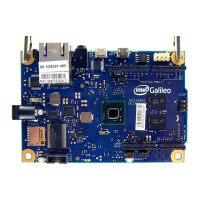Thermal Solutions
102 Thermal/Mechanical Specifications and Design Guide
8.8 Thermal Design Guidelines
8.8.1 Intel
®
Turbo Boost 2 Technology
Intel Turbo Boost 2 Technology is a feature available on certain processor SKUs that
opportunistically, and automatically, allows the processor to run faster than the marked
frequency if the part is operating below its power, temperature and current limits.
Heatsink performance (lower
Ψ
CA
as described in Section 6.1.3) is one of several
factors that can impact the amount of Turbo Mode frequency benefit. Turbo Mode
performance is also constrained by ICC, and V
CC
limits.
With Turbo Mode enabled, the processor may run more consistently at higher power
levels (but still within TDP), and be more likely to operate above T
CONTROL
, as
compared to when Turbo Mode is disabled. This may result in higher acoustics.
8.8.2 Thermal Characterization Parameter
The case-to-local ambient Thermal Characterization Parameter (Ψ
CA
) is defined by:
Equation 8-1.
Ψ
CA
= (T
TTV-CASE
- T
LA
) /
TDP
Where:
T
TTV-CASE
= Thermal Test Vehicle (TTV) case temperature (°C). For T
TTV-CASE
specification see Section 6.1.1.
T
LA
= Local ambient temperature in chassis at processor thermal solution
inlet (°C).
TDP = TDP (W) assumes all power dissipates through the integrated heat
spreader of the TTV. The TTV thermal profile see Figure 6-1 and
Tab l e 6 -2 account for differences in temperature distribution between
processor and TTV. No user correction is required
Εθυατιον 8 2.
Ψ
CA
= Ψ
CS
+ Ψ
SA
Where:
Ψ
CS
= Thermal characterization parameter of the TIM (°C/W) is dependent
on the thermal conductivity and thickness of the TIM.
Ψ
SA
= Thermal characterization parameter from heatsink-to-local ambient
(°C/W) is dependent on the thermal conductivity and geometry of the
heatsink and dependent on the air velocity through the heatsink fins.
Figure 8-6 illustrates the thermal characterization parameters.

